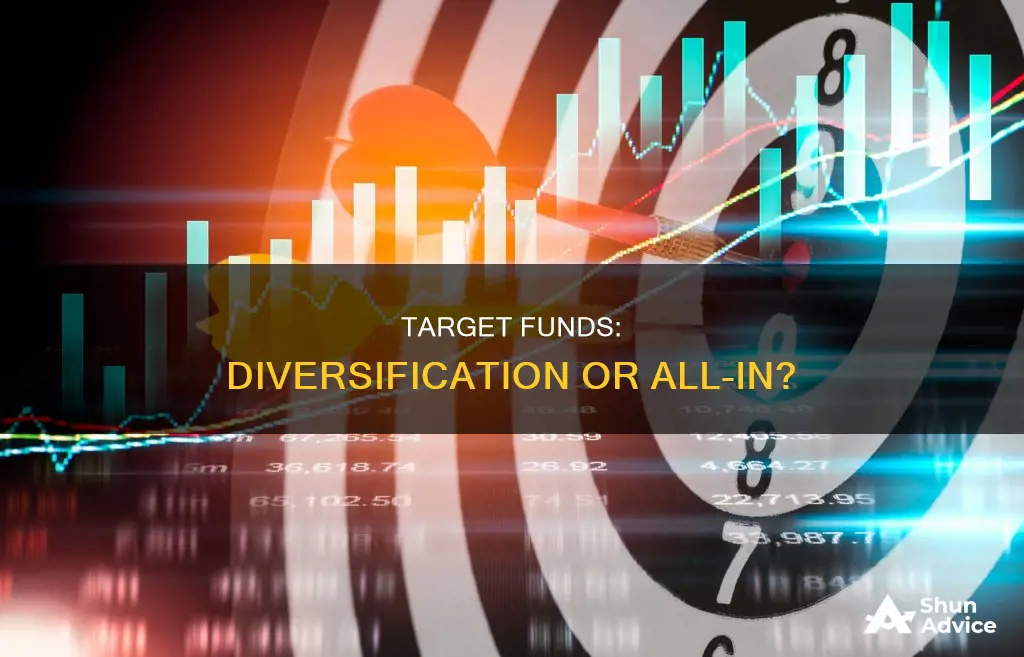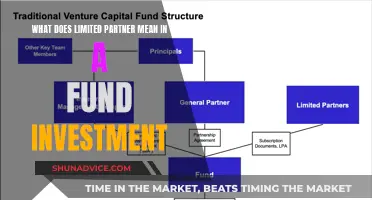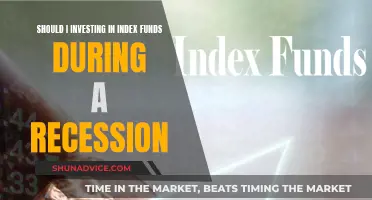
Target-date funds are a popular choice for investors saving for retirement. They are a set it and forget it investment option that automatically rebalance and reallocate assets as the investor gets closer to retirement. While they can be a convenient way to invest, there are several reasons why you may not want to invest everything in a target-date fund. Firstly, target-date funds limit investment choices and decisions, often employing a one-size-fits-all strategy. Secondly, they may become too conservative too quickly, reducing the overall potential return. Thirdly, target-date funds may charge high fees compared to other investment options. Finally, it's important to remember that all investments carry risks, and target-date funds are no exception. Therefore, while target-date funds offer a simple and convenient way to invest for retirement, they may not be suitable for everyone, and it's essential to consider the disadvantages before investing everything in them.
What You'll Learn

Target-date funds may be too conservative near retirement and may forego returns
Target-date funds are designed to help manage investment risk and are popular among investors saving for retirement. However, one of the disadvantages of target-date funds is that they may be too conservative near retirement and may forego returns. Here's a more detailed explanation:
As investors approach their target retirement date, target-date funds typically shift their asset allocation towards more conservative investments, such as bonds and cash, to preserve wealth. While this strategy helps to reduce risk, it can also result in lower potential returns. The focus on conservative investments may occur too early or too aggressively, reducing the overall return on investment. This is especially important to consider as many retirees live for several decades after retiring and may require the additional growth that stocks can provide.
The "glide path" of a target-date fund refers to how it gradually shifts from aggressive to conservative investments over time. However, some funds may transition to conservative investments too quickly or allocate too much of their portfolio to these lower-risk, lower-return investments. This can result in a significant reduction in potential retirement income.
To mitigate this issue, investors can consider purchasing a target-date fund with a date five or ten years later than their intended retirement. This later-dated fund will have a higher allocation to stocks, providing the potential for greater growth. Additionally, investors can consider supplementing their target-date fund with other investments, such as a mixed portfolio or index funds, to have more control over their asset allocation and potentially increase their returns.
It's important for investors to carefully review the prospectus and fee structure of any target-date fund they consider to ensure it aligns with their investment goals, risk tolerance, and expected returns. While target-date funds offer convenience and a hands-off approach to investing, they may not always provide the optimal level of returns, especially near retirement.
Mutual Fund Strategies: Deposits and Investments Timeline
You may want to see also

Fees vary among funds
Fees vary among target-date funds, so it's important to compare these before selecting one for your money. The expense ratio of the Vanguard Target Retirement 2050 Fund (VFIFX) is 0.08%, while the expense ratio for the Fidelity Freedom 2050 Fund (FFFHX) is 0.75%. While the fees have been coming down, you may be able to find cheaper funds and manage the portfolio yourself.
The average target-date fund had an expense ratio of 0.52% in 2020, according to research from Morningstar. But these fees can range from as low as 0.1% to more than 1.5%, so there’s room to shop around. The difference in price often revolves around whether the fund leans on cheaper passive investing strategies or more costly actively managed accounts.
Target-date funds are a type of "fund of funds", meaning they are mutual funds that purchase from other mutual funds. Each is a fund of funds, and the portfolio you buy into consists of multiple underlying mutual funds, each of which has an expense ratio. Depending on how the fund family calculates fees, those expenses can add up quickly. For instance, one fund company may charge 0.21% of assets under management while another may charge twice or even three times that amount.
Some target-date funds also add additional management fees to their gross expense ratio. Many funds excluded from "best of" lists charged additional distribution and service fees—so-called 12b-1 fees—or carried exorbitant expense ratios.
Money Market Funds: Where Are Your Investments Going?
You may want to see also

Individuals are not actively involved in investment choices
Target-date funds are a popular choice for investors saving for retirement, but they do have some drawbacks. One such disadvantage is that individuals are not actively involved in investment choices. While this hands-off approach can be beneficial for those who don't want to manage their own retirement portfolio, it's important to understand the implications.
Target-date funds are designed to be a "set it and forget it" investment option. Once investors select their target retirement year and contribute to the fund, the asset allocation is automatically adjusted over time, becoming more conservative as they approach retirement age. This means that individuals don't actively choose which assets to invest in or when to buy and sell. The fund managers make these decisions on their behalf, based on the investor's time horizon.
While this passive approach can be appealing, especially for those who don't have the time or expertise to actively manage their investments, it's important to recognise that it may not be suitable for everyone. Some individuals may prefer to have more control over their investment choices and the ability to make decisions based on their own risk tolerance, financial goals, and market conditions.
Additionally, target-date funds often follow a one-size-fits-all strategy, which may not align with the specific needs and circumstances of every investor. By investing in a target-date fund, individuals are delegating important financial decisions to the fund managers, trusting that their choices will align with their own interests. This lack of involvement in investment choices can be concerning for those who want a more customised or hands-on approach to their retirement planning.
Furthermore, target-date funds may not be well-suited for individuals with unique financial situations or those who have other investments outside of the fund. As the funds automatically adjust their asset allocation, they may not take into account an individual's overall investment portfolio, which could lead to an imbalance in their overall asset allocation. It's important for investors to periodically review their investment portfolio to ensure that their target-date fund still aligns with their financial goals and risk tolerance.
In conclusion, while target-date funds offer a convenient and passive investment approach, the fact that individuals are not actively involved in investment choices can be a significant drawback for those who want more control and customisation in their retirement planning. It's crucial for investors to understand the implications of delegating these decisions to fund managers and to periodically review their investment strategies to ensure they remain on track.
Blackstone's Borrowed Funds: A Strategic Investment Move
You may want to see also

Target-date funds may be too broad
Target-date funds are a popular choice for investors saving for retirement. They are a "set it and forget it" investment option, where investors choose a fund that corresponds to the year they plan to retire. The fund then automatically adjusts the asset mix, becoming more conservative over time.
However, one of the disadvantages of target-date funds is that they may be too broad. Here are some reasons why:
- Target-date funds are often a one-size-fits-all strategy. Workers across different income brackets may be offered the same plan, even though their retirement savings needs may differ. For example, lower-wage workers can generally replace a larger share of their income with Social Security, so they can afford to take on more risk in their investments.
- Target-date funds are typically managed by a small number of large companies, and around 60% of offerings are off-the-shelf, standard options. This lack of customization may not suit all investors, especially those with unique circumstances or specific retirement goals.
- Target-date funds may not be well-suited to all investors, especially those close to retirement. The funds become more conservative over time, and while this can provide a safe financial landing, it may also lower overall potential returns.
- Target-date funds differ in how they allocate assets between stocks, bonds, and other investments. Even funds with the same target date may have very different investment strategies and asset allocations, which can affect the level of risk and returns.
In conclusion, while target-date funds offer a convenient and simple way to save for retirement, they may not be tailored to the specific needs and goals of all investors. It is important for individuals to understand the limitations of target-date funds and consider seeking advice from a financial planner to ensure their retirement savings plan is aligned with their unique circumstances.
Maximizing HSA Funds for FI: Where to Invest Wisely
You may want to see also

Target-date funds may be too conservative
Target-date funds are a popular choice for investors saving for retirement. They are designed as a one-stop investment shop with a diversified set of asset classes. However, they may be too conservative for some investors, especially those approaching retirement age. Here's why:
High Fees
Target-date funds typically have higher fees compared to individual index funds. For example, the Fidelity Freedom 2060 Fund has an expense ratio of 0.75%, while investors can achieve a similar level of diversification by owning four separate Fidelity index funds at a fraction of the cost (0.16% in total annual expense ratio fees).
Not Suitable for All Investors
Target-date funds offer a one-size-fits-all strategy, which may not be suitable for everyone. They are designed for investors who can estimate their retirement age and year. Additionally, they may not take into account the specific financial situations and retirement goals of individual investors, such as income level and profession.
Conservative Asset Allocation
Target-date funds become more conservative as investors approach their target retirement date, typically shifting from stocks to more conservative investments like bonds and cash. While this helps to preserve wealth, it may result in lower returns. Research has shown that target-date funds may become too conservative for most people around the age of 50. A typical upper-middle-class couple without access to family wealth should put 80% of their portfolio in stocks at age 45 and then decline to a steady 60% at and during retirement. In contrast, target-date funds often have a 50% stock allocation at retirement, declining to 30-40% in later years.
Poor Performance
Target-date funds have been scrutinized for their poor performance in recent years. For example, the Vanguard Target Retirement 2025 Fund (VTTVX) fell more than 15% in 2022, despite being close to its target date. Additionally, with many seniors living longer, the conservative asset allocation of target-date funds may not provide the growth needed to sustain retirement income.
Lack of Control
Target-date funds limit investment choices and decisions, as they automatically rebalance an investor's portfolio based on their time until retirement. This lack of control may be undesirable for investors who want to actively manage their investments and maximize their returns.
Small-Cap Growth Funds: Smart Investment, Big Returns
You may want to see also
Frequently asked questions
Target funds are a great option for those who want a hands-off approach to investing for retirement. However, there are some disadvantages to consider. Firstly, target funds may become too conservative too quickly, reducing your overall potential returns. Secondly, target funds may charge high fees compared to other investment options, eating into your potential earnings. Finally, target funds may not be tailored to your specific retirement needs, as they often have a one-size-fits-all strategy. Therefore, it's important to carefully consider the advantages and disadvantages of target funds before deciding how to allocate your investments.
Target funds offer a simple, hands-off approach to investing for retirement. They automatically adjust your asset allocation over time, reducing the need for constant monitoring and adjustments. Additionally, target funds provide a well-diversified portfolio of stocks and bonds, which can help optimise your returns and reduce risk.
While target funds offer a simple solution, they may not be tailored to your specific retirement needs. They often have a one-size-fits-all strategy, which may not align with your financial goals or risk tolerance. Additionally, target funds may become too conservative too quickly, shifting your assets from stocks to bonds prematurely, which can reduce your overall potential returns. Finally, target funds may charge high fees compared to other investment options, and these fees can add up over time, impacting your earnings.







